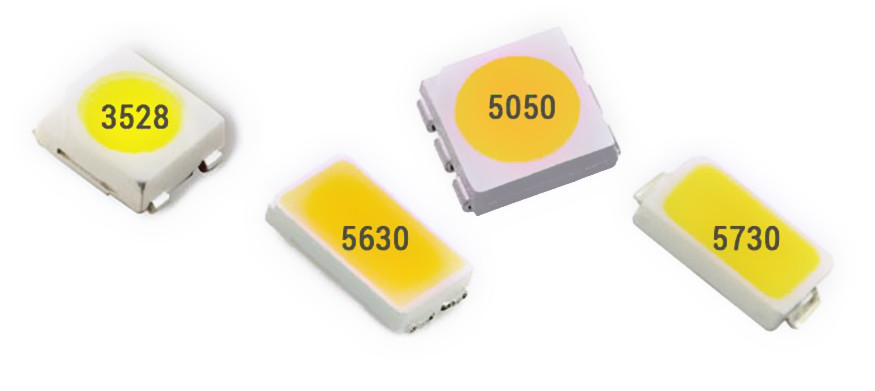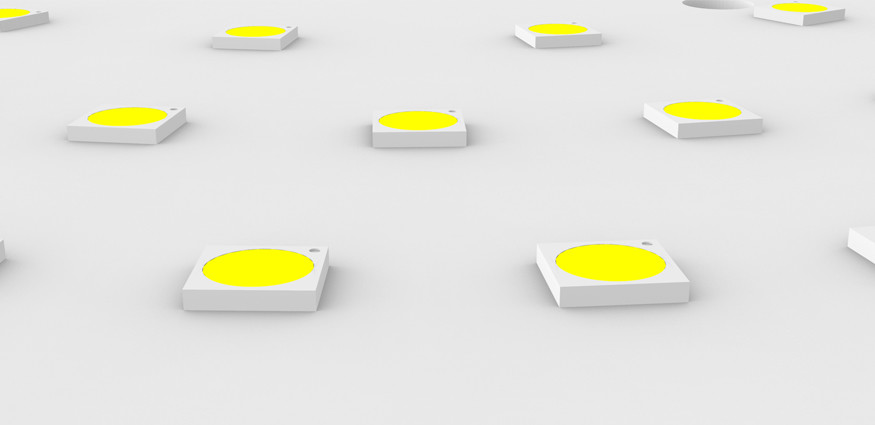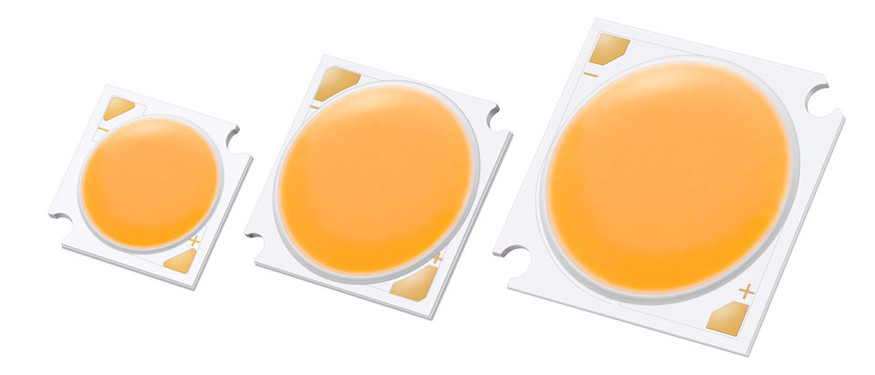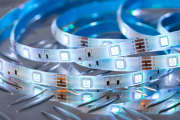1. LED History
The basics that semiconductor materials can generate light have been known for 50 years. In 1962, General Electric Company developed the first practical visible light-emitting diode. The basic structure of the LED is a piece of electroluminescent semiconductor material, which is placed on a lead frame, and then sealed with epoxy resin around it, that is, a solid package, which can protect the inner core wire. Therefore, the shock resistance of LED is good.
Originally LEDs were used as indicator light sources for instrumentation. Later, LEDs of various light colors have been widely used in traffic lights and large-area display screens, resulting in good economic and social benefits.
Take a 12-inch red traffic light as an example. In the United States, a long-life, low-efficiency 140-watt incandescent lamp is used as the light source, which produces 2000 lumens of white light. After passing through the red filter, 90% of the light is lost, leaving only 200 lumens of red light. In the newly designed lamp, Lumileds used 18 red LED light sources, including circuit losses, a total of 14 watts of power consumption, which can produce the same light effect.
Automotive signal lights are also an important area of application of LED light sources.
2. Principle of LED Chip
LED (Light Emitting Diode) is a solid-state semiconductor device. It can directly convert electricity into light. The heart of an LED is a semiconductor wafer, one end of which is attaching to a holder. One end is negative and the other end is connecting to the positive of the power supply. Engineers encapsulate the entire wafer with epoxy.
A semiconductor wafer consists of two parts, one is a P-type semiconductor in which holes dominate. The other part is N-type semiconductor, which is mainly electrons here. But when the two semiconductors meet together, a “P-N junction” comes into being between them.
When we apply a current to the wafer through a wire, the electrons are going towards the P region, where they recombine with holes and emit energy in the form of photons. This is the principle of LED light. And the wavelength of light, which is the color of light, is the result of the material that forms the P-N junction.
3. Classification of LED Chips
i. MB chip definition and characteristics
Definition: Metal Bonding (metal bonding) chip.
Features:
(1) Using a material with high heat dissipation coefficient—Si as the substrate, it is easy to dissipate heat.
Thermal Conductivity
GaAs: 46W/m-K GaP: 77W/m-K
Si: 125~150W/m-K
Cupper:300~400W/m-k
SiC: 490W/m-K
(2) The metal layer has bonded the epitaxial layer and the substrate, and the layer reflects the photons at the same time to avoid the absorption of the substrate.
(3) The conductive Si substrate replaces the GaAs substrate, which has good thermal conductivity (the difference in thermal conductivity is 3 to 4 times), and is more suitable for the field of high driving current.
(4) The bottom metal reflective layer is conducive to the improvement of luminosity and heat dissipation.
(5) Engineers can increase and used the size in the field of high power, eg: 42mil MB.
ii. GB Chip Definition and Features
Definition: Glue Bonding chip.
Features:
(1) The transparent sapphire substrate replaces the light-absorbing GaAs substrate, and its light output is more than twice that of the traditional AS (Absorbable structure) chip, and the sapphire substrate is similar to the GaP substrate of the TS chip.
(2) The chip emits light on all sides and has an excellent pattern.
(3) In terms of brightness, its overall brightness has exceeded the level of the TS chip (8.6mil).
(4) Double-electrode structure, its high current resistance is slightly worse than TS single-electrode chip.
iii. TS Chip Definition and Features
Definition: transparent structure (transparent substrate) chip
Features:
(1) The chip process is complex, much higher than AS LED.
(2) Excellent reliability.
(3) Transparent GaP substrate, which does not absorb light and has high brightness.
(4) Widely used.
iv. AS Chip Definition and Features
Definition: Absorbable structure chip.
After nearly 40 years of development efforts, the LED optoelectronic industry is in a mature stage for the research and development, production and sales of this type of chip. The research and development level of major companies in this area is basically at the same level, and the gap is not large.
The Asian chip manufacturing industry started late, and its brightness and reliability still lag behind the Taiwanese industry. The AS chip we are talking about here refers to 712SOL-VR, 709SOL-VR,
712SYM-VR, 709SYM-VR, etc.
Features:
(1) The MOVPE process has prepared the quaternary chip , and the brightness is brighter than that of the conventional chip.
(2) Excellent reliability.
(3) Wide application.








